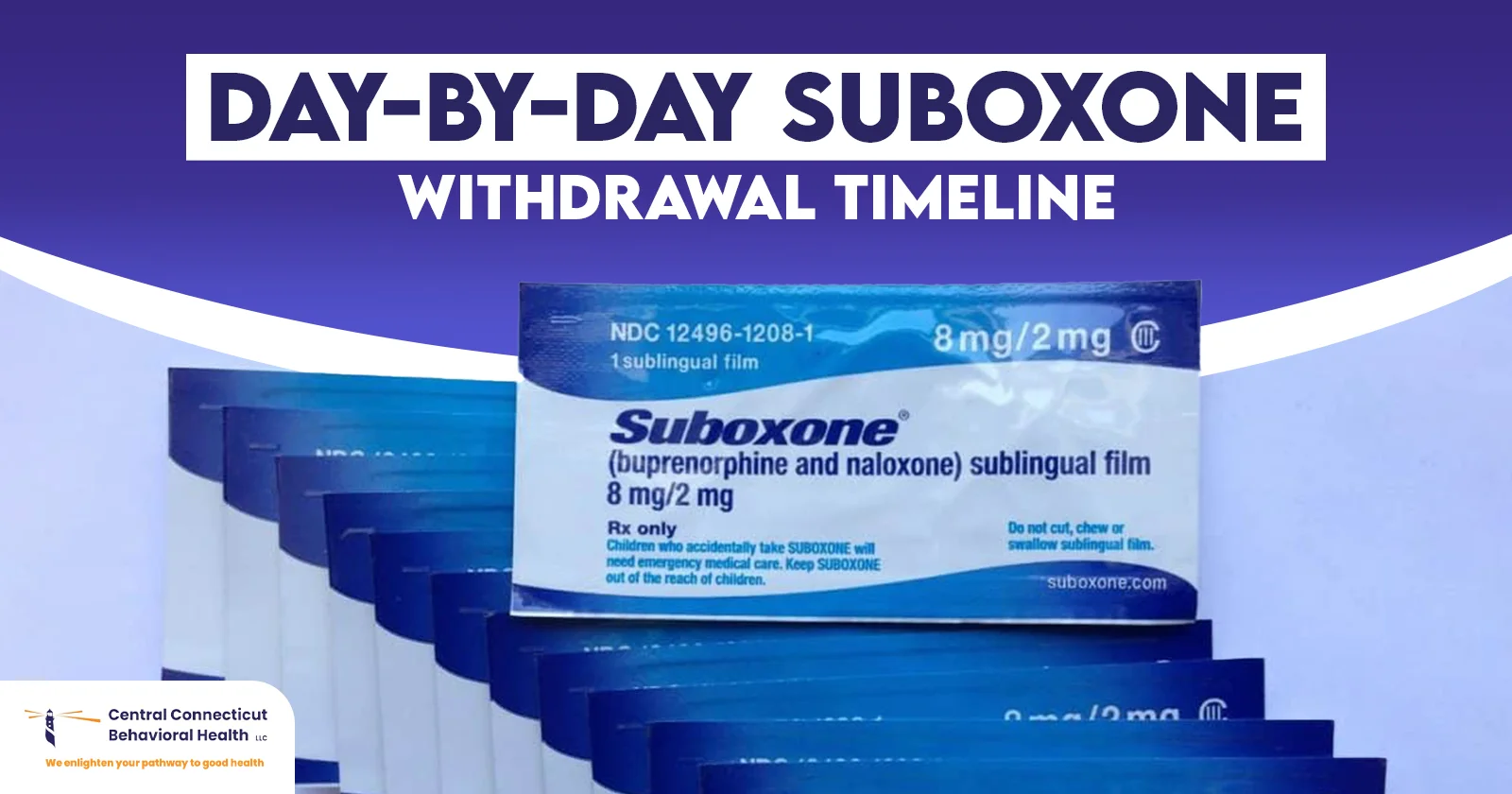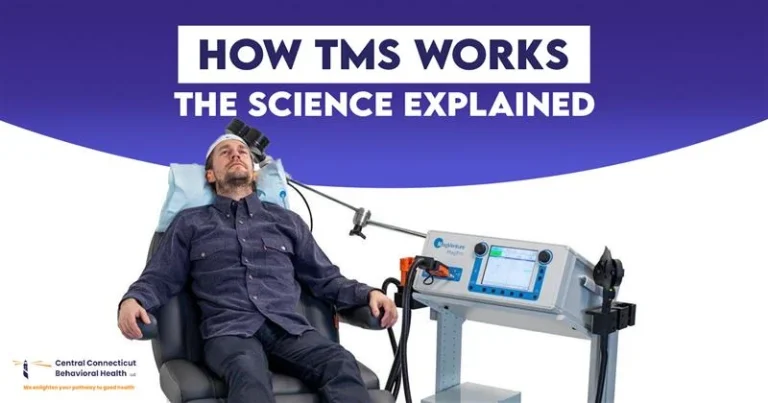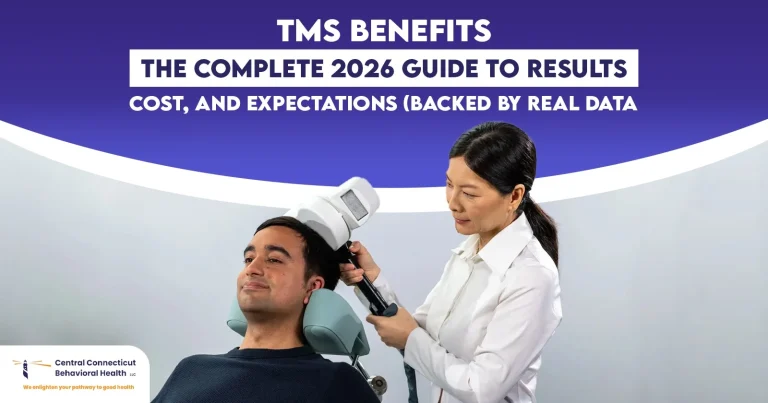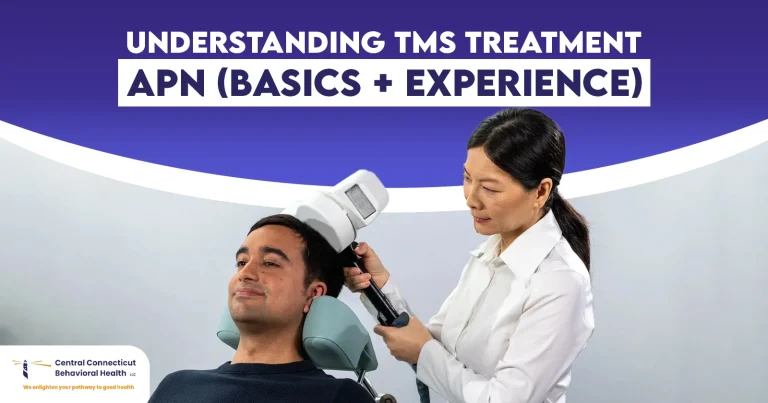Suboxone is a drug that is commonly used to assist individuals in overcoming addiction to opioids. It lowers the cravings and withdrawal symptoms, thus making recovery easier to cope with.
Nevertheless, upon discontinuation of the use of Suboxone, particularly at a rapid rate, the body and the mind may be affected by withdrawal. The day-by-day of the Suboxone withdrawal timeline process can assist you in anticipating what is to be expected and finding ways to make it through with the help of the symptoms.
Central Connecticut Behavioral Health assists these people in this process through medical assistance, therapy, and individual care towards a long-term recovery.
What is Suboxone and Withdrawal?
Suboxone includes buprenorphine (a partial agonist of opioids) and naloxone (an antagonist of opioids). It binds to opioid receptors in the brain, lowering craving without the severe high of other, more potent opioids.
Once you quit taking Suboxone abruptly or reduce the dosage too rapidly, your body responds to the drug withdrawal. This causes physical and psychological withdrawal symptoms. These symptoms are also determined by aspects such as dose, duration of use the body chemistry, intensity, and duration of the symptoms.
Suboxone Withdrawal Timeline Day by Day
In spite of the fact that the withdrawal experiences vary with individuals, most individuals have a general pattern. This is a day-by-day withdrawal schedule with Suboxone to make you aware of what to expect in the rehabilitation process.
Day 1–2: Early Withdrawal Begins
The initial withdrawal symptoms begin after 24 to 48 hours as the drug begins to come out of your system.
Common symptoms include:
- Anxiety or restlessness
- Muscle aches
- Runny nose and watery eyes
- Insomnia
- Cravings
You may experience being flu-like, but these are the usual side effects of having the body adjust to the thought of using no Suboxone anymore. It is also essential to have as much rest as possible and drink.
Day 3–5: Peak Withdrawal Symptoms
As far as day 3 of the Suboxone withdrawal is concerned, the symptoms tend to peak.
At this level, the physical symptoms are more intense and they may include:
- Nausea and vomiting
- Sweating and chills
- Abdominal cramping
- Headaches
- Fatigue
Bad temper and moodiness.
This may be the hardest part of the withdrawal schedule of Suboxone, both physically and emotionally. The majority of people are full of desires, and they may feel overwhelmed. Treatment Centers like the Central Connecticut Behavioral Health will help you ensure that you are safe and comfortable during this stage
Day 6–10: Physical Symptoms Start to Ease
The worst physical symptoms start to disappear after the first week. You may still experience:
- Mild muscle aches
- Trouble sleeping
- Emotional ups and downs
- Low energy levels
The body also begins to adapt, yet the psychological withdrawal effects, such as depression, anxiety, and cravings, can be intense. This is where counseling, therapy, and medication management can intervene to minimize relapse risk.
Day 11–21: Emotional Recovery Phase
In the second and third weeks, physical pain can be managed, whereas mental and emotional signs may continue.
You might notice:
- Difficulty focusing
- Mood swings
- Incessant anxiety or depression.
- Low motivation
The phase signifies disparity between the physical and psychological symptoms of Suboxone withdrawal. Although the body has begun to heal, the brain has yet to adapt to changes in chemicals. Frequent therapy sessions, mindfulness, and support groups are helpful in this phase.
Day 22–30: Lingering Symptoms (Post-Acute Phase)
Within the first month, the majority report that they have improved a lot. Nonetheless, there is a possibility that some of these may undergo Post-Acute Withdrawal Syndrome (PAWS), a complex of emotional or cognitive residual symptoms.
These may include:
- Occasional insomnia
- Mood instability
- Cravings under stress
- Fatigue
The Suboxone withdrawal plan between days 1 and 30 reveals that several days may pass before the physical symptoms disappear, but the emotional recovery does not. That is why the continuous assistance of such professionals as those at Central Connecticut Behavioral Health is the key to permanent recovery.
Suboxone Taper Withdrawal Schedule
Slowly reduce Suboxone instead of stopping it at once will reduce the withdrawal severity. Depending on your dosage and treatment schedule, a Suboxone taper withdrawal program may take many weeks or even several months.
An average taper may appear as:
- Weeks 1-2: Take a little less dose under medical supervision.
- Weeks 3-4: Go on with increments in dose reduction.
- Weeks 5 or more: Stop altogether when the withdrawal symptoms are low.
Our providers at Central Connecticut Behavioral Health develop tailored taper plans to assist you in the process of transitioning safely and eliminating physical and emotional side effects.
The difference between physical and Psychological Withdrawal
To prepare to go through with the switch, the physical vs psychological Suboxone withdrawal timeline would be helpful.
- The physical withdrawal: It consists of flu-like symptoms, nausea, chills, and fatigue. These tend to disappear in 7-10 days.
- Psychological withdrawal: It includes depression, anxiety, and cravings, which may take weeks or months. The stage requires emotional support and therapy.
- The process of recovery is both physiological and psychological, and continuous care means a smoother way to go.
What to Expect During Suboxone Withdrawal
Don’t know what to expect from Suboxone withdrawal, but it is necessary to keep in mind that each experience is unique to a person. Some of the usual causes of your recovery are:
- Length of Suboxone use
- Dosage levels
- Overall health
- Whether you wean yourself out or stop like that.
In the event of professional advice and guidance, the vast majority of individuals can cope with the symptoms and remain sober over the long term.
How Long Does Suboxone Withdrawal Last?
There is no generalized answer to the question How long does Suboxone withdrawal last?
In general:
- Acute withdrawal: Duration is approximately 7-14 days.
- Post-acute withdrawal: This may require weeks or even months to be over, depending on how well your body adapts.
- At Central Connecticut Behavioral Health, we provide you with continuous medical and emotional support on your journey to complete recovery, guiding you through the entire process of detoxification and recovery.
When to Seek Professional Help
Stopping Suboxone is not an easy task. Medical supervision helps to keep you safe, as well as to decrease the chances of relapse.
Central Connecticut Behavioral Health provides:
- Drug-assisted detoxification programs.
- Behavioral therapy and counseling.
- Continued as an aid in relapse prevention.
Through caring and evidence-based treatment, recovery is not only achievable but also sustainable.
Start Your Recovery Safely with Central Connecticut Behavioral Health
When you are willing to quit taking Suboxone, please do not do it by yourself. The Central Connecticut Behavioral Health professionals provide therapeutic and medically-managed detox and therapy programs that are designed to ensure the safety and efficacy of the withdrawal process.
Be the first to make a healthy choice. Contact Central Connecticut Behavioral Health now to begin the healing process with the help and support of our professionals.
FAQs About the Suboxone Withdrawal Timeline
What is the duration of Suboxone withdrawal?
The acute symptoms are experienced by most people for a duration of 7-14 days; however, the emotional symptoms may persist for a number of weeks.
What occurs on day 3 of Suboxone withdrawal?
Day 3 is also the day when the physical symptoms, such as nausea, sweating, and muscle aches, are at their highest. It is not an easy day, but the symptoms are relieved slowly afterward.
Is it safe to do a slow withdrawal of Suboxone at home?
It should not be taken without a doctor’s recommendation. The timeline of Suboxone withdrawal is safe and comfortable with the help of a professional.
Are the withdrawal symptoms of Suboxone hazardous?
Although not life-threatening, symptoms are uncomfortable and result in relapse unless they are taken care of.
What is effective in easing Suboxone withdrawal?
Discomfort can be reduced with the aid of medical detox, hydration, rest, counseling, and gradual tapering.














